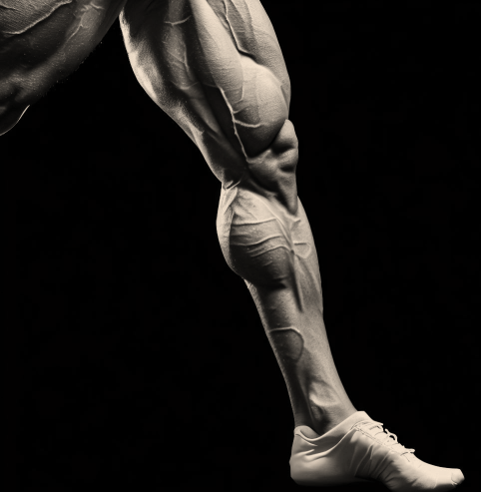Understanding the Leg Muscle Groups
The human leg is a marvel of engineering. A symphony of bones, ligaments, and muscles working together in perfect harmony to allow us to walk, run, jump, and dance. To truly appreciate the leg’s capabilities, it’s essential to understand its primary muscle groups. So, pull up a chair, sit back, and let’s embark on this fascinating journey together.
Introduction: The Significance of Leg Muscles
Our legs are the pillars of our body. They carry our weight, propel us forward, and play a pivotal role in many of our daily activities. From walking up the stairs to sprinting after a bus, leg muscles are constantly at work. This section delves into the importance of understanding these muscles, both for those in the medical field and for the general public.
The Quadriceps: The Powerhouse of the Front Thigh
Often referred to as the “quads”, this muscle group is located at the front of the thigh and comprises four distinct muscles:
- Rectus femoris
- Vastus lateralis
- Vastus medialis
- Vastus intermedius
These muscles play a crucial role in extending the knee and providing stability during activities like running and jumping.
The Hamstrings: Flexibility and Movement
Situated at the back of the thigh, the hamstrings consist of three muscles:
- Biceps femoris
- Semitendinosus
- Semimembranosus
These muscles are responsible for flexing the knee and extending the hip joint. They also play a significant role in activities requiring a forward bend.
The Calf Muscles: More Than Just Aesthetics
The calf is home to two primary muscles:
- Gastrocnemius
- Soleus
These muscles work together to facilitate plantar flexion, allowing us to push off the ground while walking or running. Additionally, they help maintain posture and balance.
The Glutes: The Power Behind Every Step
Commonly known as the “butt muscles”, the glutes are a group of three:
- Gluteus maximus
- Gluteus medius
- Gluteus minimus
These muscles aid in hip rotation, extension, and abduction. Strong glutes are pivotal for stability and power in movements like squatting and jumping.
The Adductors: Bringing Legs Together
Located in the inner thigh, the adductors are a group of muscles that work together to bring the legs towards the body’s midline. They play a vital role in stabilizing the pelvis and assisting in hip flexion.
The Tibialis Anterior: The Unsung Hero of the Lower Leg
Found on the outer front part of the lower leg, this muscle plays a key role in dorsiflexion – the action of pulling the foot towards the shin. It also offers support when walking on uneven terrain.
Injury Prevention: The Importance of Balanced Strength
Understanding the leg muscle groups is paramount for preventing injuries. Ensuring that all muscle groups are equally strong and flexible can reduce the risk of strains, sprains, and other leg-related issues.
Exercises for Stronger Legs
Familiarity with the leg muscles can enhance workout routines. Here, we’ll discuss exercises tailored to each muscle group, ensuring a well-rounded and balanced leg workout.
The Role of Leg Muscles in Sports
In sports, leg muscles are the stars of the show. This section delves into the specific role each muscle plays in various sports, from football to ballet.
Anatomy and Beyond: The Evolution of Leg Muscles
Journey with us through time as we explore how leg muscles have evolved, adapting to our ever-changing lifestyles and environments.
FAQs
What is the largest muscle in the leg? The largest muscle in the leg is the gluteus maximus, which is also one of the strongest muscles in the human body.
How can I strengthen my leg muscles? Strengthening leg muscles involves a combination of resistance training, aerobic exercises, and flexibility routines.
Do leg muscles recover faster than other muscles? Recovery time can vary, but smaller muscles like the ones in our forearms and calves might recover faster than larger muscle groups like the quads and hamstrings.
Why do leg workouts sometimes cause more soreness? Leg muscles are large and can be subjected to intense workouts, leading to delayed onset muscle soreness (DOMS).
Can you work out leg muscles every day? It’s not advisable to intensely work out any muscle group daily. Giving muscles time to recover is crucial for growth and avoiding injuries.
What are the signs of a leg muscle injury? Common signs include sharp pain, swelling, decreased range of motion, and in some cases, bruising.
Conclusion: The Marvel of the Human Leg
The intricate web of muscles in our legs is nothing short of miraculous. By understanding the leg muscle groups, we can better appreciate the wonders of the human body and take measures to keep our legs strong and healthy. Here’s to many more miles of walking, dancing, running, and jumping!
For a deeper understanding of the intricacies of leg muscles and their functions, explore our comprehensive articles in the anatomy category.
